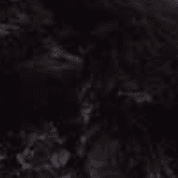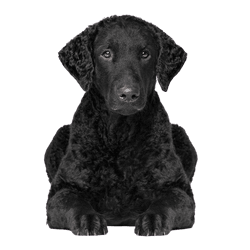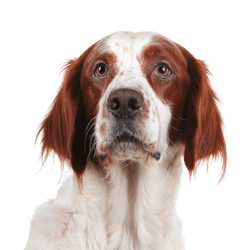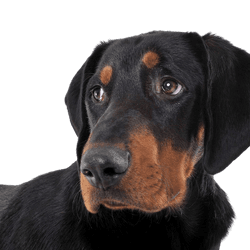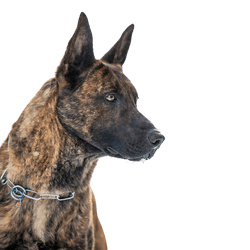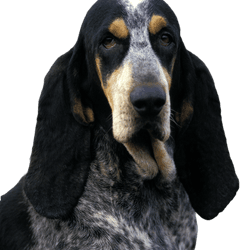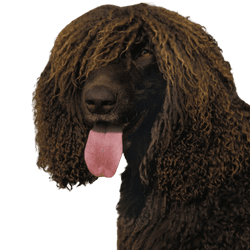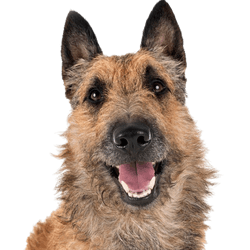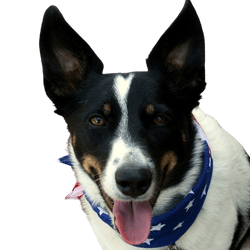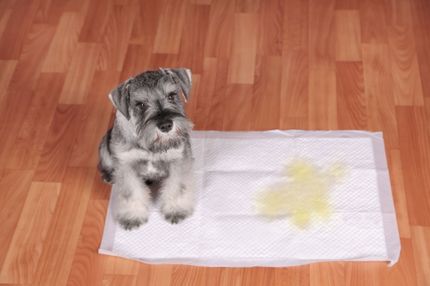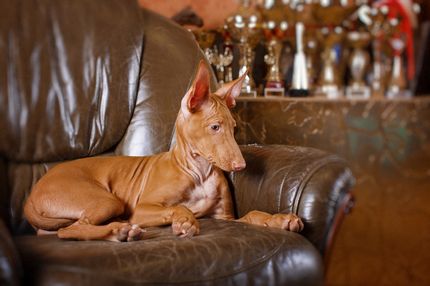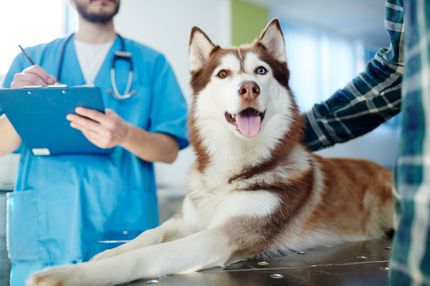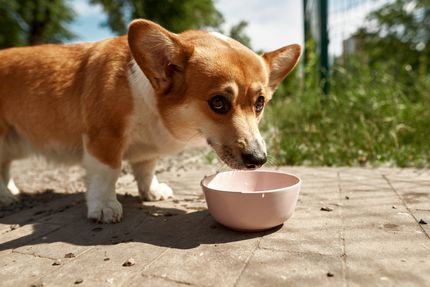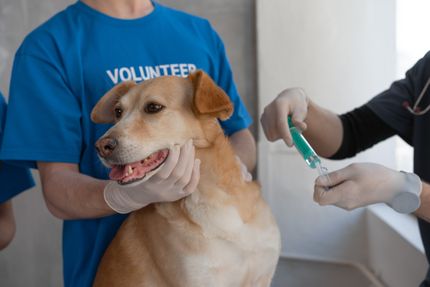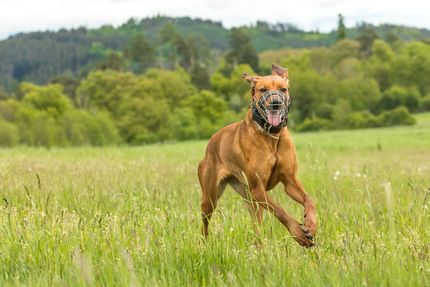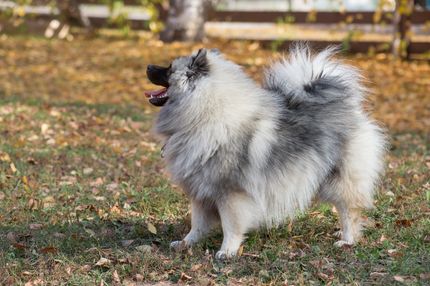Facts & Origin
Origin and history of the Groenendael
The Groenendael is often colloquially referred to as the Belgian Sheepdog, although it is only one of four varieties of the Belgian Sheepdog. Other possible varieties are the Tervueren, the Groenendael and the Malinois. They are distinguished mainly by the different textures of the coat. The Malinois has short coat, while Tervueren and Groenendael are long-haired and Laekenois is rough-haired.
All four breeds of Belgian Shepherds have their names after places and breeding grounds in Belgium. Since both French and Flemish are spoken in these areas, the four breeds are also pronounced differently depending on the area. The name of the Groenendael comes from the village of the same name, where the landlord Rose crossed his black bitch Petite with the black guardian male Piccard in the late 19th century. Unfortunately, inbreeding was practiced with the offspring.
The Belgian Shepherd Dog was not recognized as a breed until around 1900. A number of cynologists, led by Professor A.Reul(lectureratthe veterinary school in Curegehm), were involved in this process .He can be called the real pioneer and the founder of the breed. Since then, the four varieties have been bred in parallel or, at first, also with crosses. The typeandcharacter oftheBelgian Shepherd Dogwere finally fixed around 1910.
Specimens of this dog breed were used for varied work with flocks of sheep and cattle and also served as guard, draft and driving dogs, which expresses their intelligence and love of work, but also the physical capacity.
Suitability and husbandry
Traditionally, the Groenendael was used as a sheepdog. He independently herded and drove flocks of sheep and cattle. Today, he is used in a variety of ways primarily as a sporting, working or service dog. Thus, the intelligent Groenendael likes to participate successfully in tournament dog sports, where he can live out his urge to move well. Often he is simply kept as a family dog, but in this case sufficient activity must be provided.
Listed dog Tervueren
In Switzerland (Glarus and Ticino) the Belgian Shepherd is on the list of potentially dangerous dogs. Therefore, the keeping of this dog breed there requires a permit.
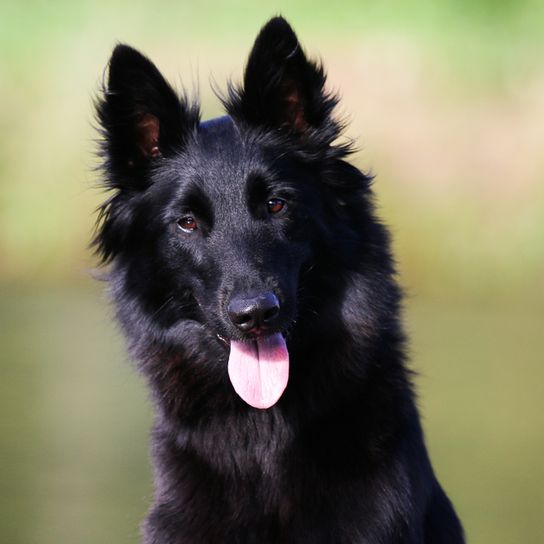
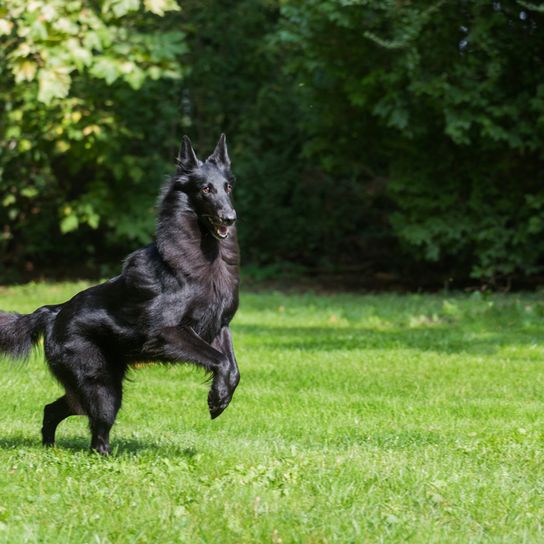
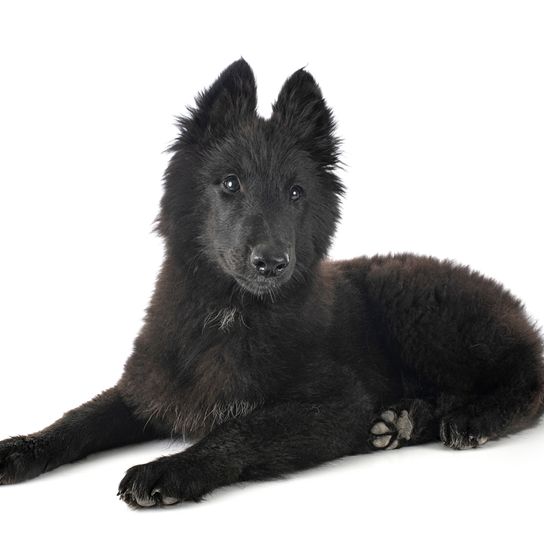
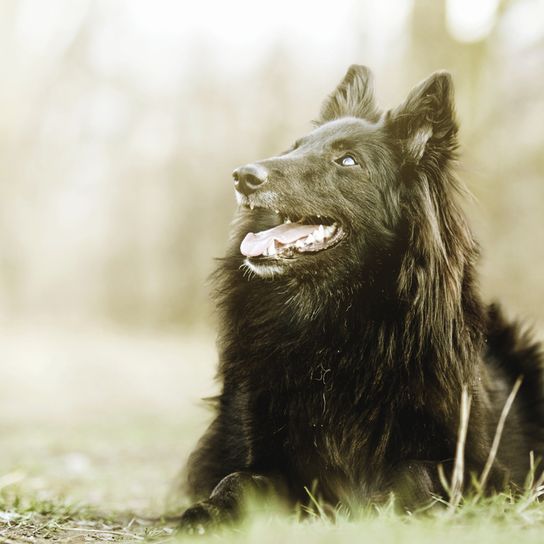
| Alternate Name | Belgian shepherd dog |
| Origin | Belgium |
| Life expectancy | 12 - 15 years |
| Care requirements | high-maintenance |
| Activity level | average |
| FCI group | Sheepdogs |
| AKC group | working group |
| KC group | working group |
Groenendael mixes
Attitude, character and temperament of the breed
Typical character traits of the Groenendael
Groenendaels are intelligent and eager to learn, but require an experienced hand in training. Consistent but gentle training is necessary to bring out the best qualities in your four-legged friend and to avoid undesirable behavior. Groenendaels that are not optimally fostered according to their nature often suffer from behavioral problems later on. As a working dog, the Groenendael enjoys challenging tasks, so you will often find him as a
- service dog, e.g. with the police, in rescue operations or with the customs.
- But many dogs can also be used in sports.
Aggressiveness and fear are not characteristics of the breed and usually only occur when underchallenged.
If you decide to get a Groenendael, you should be aware that Belgian Shepherds need to be moved and challenged. Extensive walks, dog sports or other physical and also mental activities are very useful for your dog to live a happy and healthy life.
Character
Usage
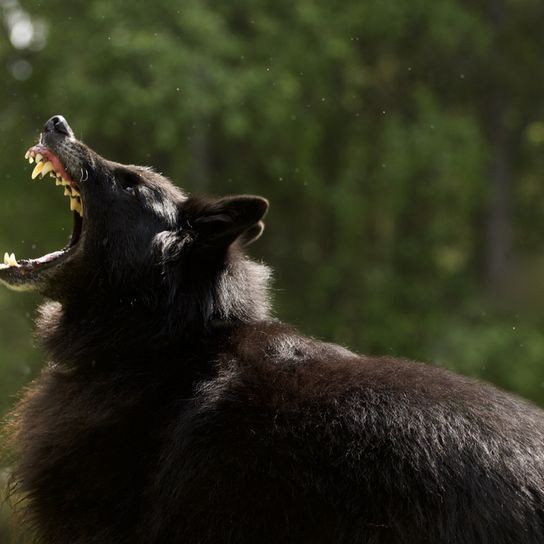
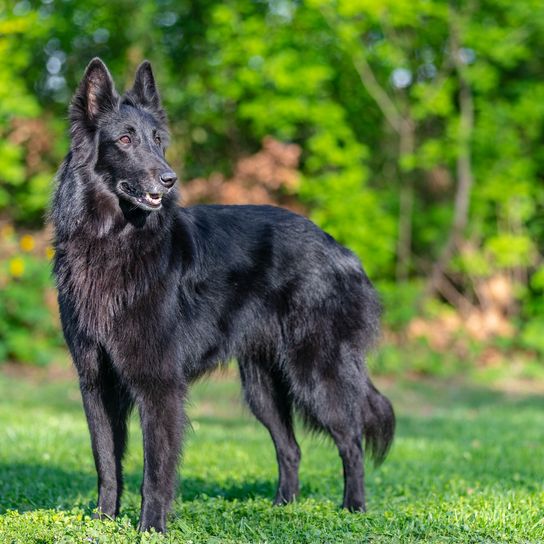
Breed diseases of the Groenendael
The Belgian Shepherd belongs to the relatively robust dog breeds, which were not generally overbred. Despite its size, he thus reaches well and gladly an age of up to 16 years. Nevertheless, the usually strong physical performance and stress in old age can lead to signs of wear and tear of the joints.
Unfortunately, epilepsy occurs more frequently in the Groenendael. Although this does not limit life expectancy with certainty, it must be taken into account in the lifestyle. In addition, a more frequent absence of optic chiasm has been described.
Groenendael breeding and purchase
If you want to buy a Groenendael puppy, an official breeder is the best place to go. This is because a reputable Groenendael breeder focuses on healthy dogs with a balanced temperament typical of the breed. He takes care that the puppies are well socialized and he uses only healthy parents for breeding.
At the Verband für das Deutsche Hundewesen (VDH) e. V. you can find a list of different Groenendael breeders and clubs you can contact if you want to buy a Groenendael.
If you want to buy a Groenendael, but it does not necessarily have to be a puppy or a dog with a pedigree, a Groenendael in need is a good alternative to an animal from a breeder. There are various organizations or clubs that provide Belgian shepherd dogs. Dogs from animal shelters are usually especially grateful when they are given a good, new home.

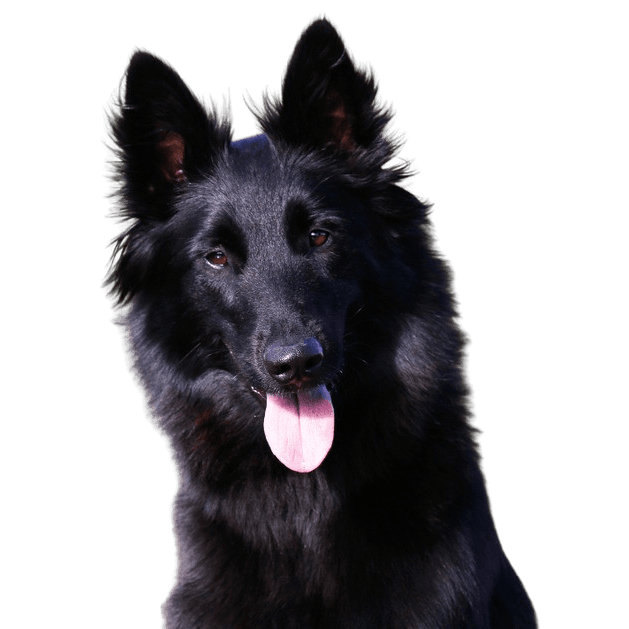
Breed characteristics of the Groenendael
Just like the other three varieties of the Belgian Sheepdog, the Groenendael is recognized by the FCI, the Fédération Cynologique Internationale. The FCI lists all four varieties under standard number fifteen, and in it it sets the breed standard for Belgian Sheepdogs in terms of character and appearance. They are classified as Group 1 (Herding Dogs and Cattle Dogs (except Swiss Mountain Dogs)), Section 1 (Sheepdogs). The breed standard requires a working test.
The average desired height, measured at the withers, is 58 cm for bitches and 62 cm for males. Deviations of 4 cm up and 2 cm down are tolerated. In relation to its height, the Belgian Shepherd is a relatively slender and light dog: the desired weight is between 20 and 25 kg for bitches and between 25 and 30 kg for males.
The gait
Constantly on the move, the Belgian Shepherd seems tireless. His gait is fast, elastic and lively. He is capable of a sudden change of direction at full speed. As a result of his exuberant temperament and due to his guarding and protective instincts, he clearly tends to move in circles.
The movement is lively and free in all gaits. The Belgian Shepherd shows a good canter, but the common gaits are the walk and especially the trot. The limbs move in a plane parallel to the axis of the body. At high speed, the paws approach the center line. The trot is medium ground covering; the movement is even and light-footed, with good drive from the hindquarters, keeping the topline firm and not lifting the forelegs too high.
The head
Carried high, the head of the Belgian Shepherd Dog must not be excessively long. It is straight in its lines, well chiselled.βelt and dry.Skull and muzzle and muzzle are approximately equal in length; the muzzle may be at most a little The muzzle may be at most a little longer, which gives the final touch to the overall appearance.
The skull isof medium width, in proportion to the length of the head and has a flattened rather than rounded forehead with little pronounced frontal furrow.Seen from the side, the topline isparallel toanimaginaryline of extension ofthe bridge of the nose. Theoccipital crestshould be little developed, the stop moderately developed and the superciliary ridgesand zygomatic bone not prominent.
The muzzle
Belgian Shepherds have a black nasal sponge set on a medium length muzzle,well chiseled under the eyes . This graduallytapers towards the nose and has the shape of an elongated wedge. The muzzleopening should belarge and wide, i.e.when the muzzle is open the corners of the mouth aredrawn strongly backand the jaws are set wide apart . The associated lips are thin but tightly fitting and strongly pigmented.
Typical is the scissor bite.However, the pincer bite is also toleratedby sheepand cattle herders . At shows the absence of two premolars 1 (PM1) is permissible and of molars 3 (M3) is not considered. The cheeks are dry andrather flat, but well muscled.
The eyes & ears
FrommediumSizeβe,neithertodeeplyingstill and slightly almond-shaped, the eyes are set obliquely and are brownish in color. color,wherebydarkcoloredEyesprefersare preferred.The eyelids are outlined in black.The gaze is open, lively, alert and inquiring.
The eyes are rather smallset high,clearly triangularinappearance . Theauricle is well curved in itself. Thepointed ears are carried firmly and erect and are set vertically when alert.
The trunk
The neck of this breed of dog, the nape of which is slightly arched, should be well set, somewhat elongated, fairly erect, well muscled and gradually broadening towards the shoulders. It has no dewlap.
The body is powerful without heaviness. The length of the body, measured from the point of the nose to the point of the buttock, is approximately equal to the height at the withers. The topline of the firm, short and well muscled back and the strong, equally short but reasonably broad loins leads straight over a pronounced withers and ends in a well muscled, only very slightly sloping and reasonably broad croup.
The chest, on the other hand, is not broad, but deeply descending. The ribs are arched in their upper part; seen from the front, the forechest is not very broad without being narrow. The lower line of profile begins below the ribcage and rises gently in a harmonious curve towards the belly, which is neither too filled out nor tucked up like a greyhound, but rises slightly and is moderately developed.
The tail
Well set on, the tail should be strong at the base and generally of medium length, that is, reaching at least to the hock, but preferably further down. At rest, it is carried hanging and shows a slight backward bend at its end at the level of the hock. In movement it is raised more, but not above the horizontal, with more pronounced curvature at the tip, but without forming a hook or deviating laterally.
The limbs
In general, the Belgian Shepherd Dog has a strong bone structure, but without heaviness. The musculature is dry and strong, the legs are vertical when viewed from any direction and are perfectly parallel when viewed from the front. The shoulder blade is long and sloping, tightly fitting and forming a sufficient angle with the long, suitably sloping upper arm, ideally 110-115°. The strong elbow should neither stick out nor be too tight and lead into a long, straight forearm. The very firm front tarsus is clearly defined, the front pastern strong and short, standing as perpendicular to the ground as possible or only very slightly tilted forward.
Seen from the side, the hind legs are vertical, seen from behind they are perfectly parallel. The upper and lower thighs of medium length are broad and strongly muscled, the stifle joint should be placed almost vertically under the hip and of normal angulation. The hock joint is deep, broad and muscled but moderately angulated. The short hind pastern is firm, dewclaws are undesirable.
The Belgian Shepherd Dog has rounded front feet ("cat feet"). The hind feet, on the other hand, may be slightly oval. The toes are arched and close together, the pads are thick and elastic, and the nails are dark and strong.
The coat
Since the length, direction of growth, appearance, and color of the coat vary amongBelgian Shepherds, this characteristic has been used as a criterion for distinguishing the four varieties of the breed: Groenendael,Tervueren,Malinois andLaekenois. The four varieties are judged separately and each is entitled to obtainaCAC,aCACIBorthecorresponding reserve awards.
The skin of this dog breed is elastic, but tightly fitting all over the body. The lips are-and eyelids are strongly pigmented. The coat inall varieties mustalways bedense, close fitting and ofgood texture.It should forman excellent protective coattogether with the undercoat.
The Groenendael in comparison
The Groenendael and the Tervueren are long haired.Thehairisshorton thehead, on the outer surface oftheears and on the lower part of the limbs, except ontheback of the forearm, whichiscovered withlong hair, called fringes,from the elbow to theroot of thefoot.On the rest of the body, the hair is long and smooth, longerand more abundant around the neck and on the forechest, where itforms a maneand an apron. Theopening ofthe earcanal is protectedbydense tufts of hair , andfrom the base of the ear thehair standsout and frames the head. The back of the thighsiscovered with very long and abundanthair, whichforms so-called"pants " .On the tail, the abundantly developed hair is long and forms a plume.
The Groenendael occurs only in solid black. In all varieties, some white is permissibleon the forechest and on the toes.
| Fur length | long |
| Fur | flat coated |
| Ear shape | Standing Ears |
| Tail | fanned out |
| Anatomy | rugged |
| Size ♀ | 56 - 62 cm |
| Weight ♀ | 20 - 25 kg |
| Size ♂ | 60 - 66 cm |
| Weight ♂ | 25 - 30 kg |
| Suitable For | - |
Colors



FAQ
-
No, as a representative of the Belgian Shepherd Dog, the Groenendael is not a beginner dog.
-
Yes. Even though the Groenendael is somewhat less active than the Malinois, it still requires a lot of exercise.
-
One of the most important differences is their coat. The Malinois has a short, smooth coat, while the Groenendael has a long, smooth coat. This also leads to differences in grooming needs, as the Groenendael requires more grooming. Another important difference is in their temperament and energy level. The Malinois is known for its high energy and working temperament, while the Groenendael is described as somewhat calmer and more balanced.
Both breeds are intelligent and trainable, but the Malinois has a stronger working drive and is better suited for tasks such as police or military missions, while the Groenendael may be better suited for families or as a sporting companion dog.
-
The Groenendael is a Belgian dog breed that belongs to the four types of the Belgian Sheepdog, together with the Malinois, the Tervueren and the Laekenois. The Groenendael is known for its long, smooth coat and calm, even temperament.
-
The Groenendael is known for its long, smooth and black coat.
-
If given enough exercise, the Groenendael may also be suitable as a family dog.
-
The name of the Groenendael comes from the village of the same name, where the landlord Rose crossed his black bitch Petite with the black guardian male Piccard in the late 19th century.
-
It is important to make sure that the long coat of the Groenendael does not become matted. Therefore, you should brush it regularly. In addition, your four-legged friend - as with any dog - must be regularly checked ears, nose, claws and teeth.




